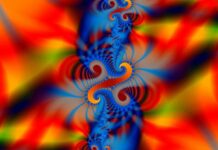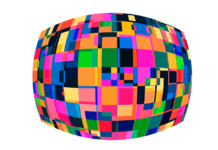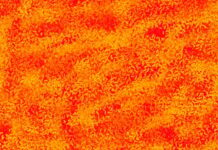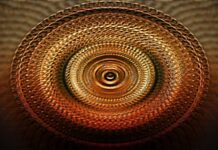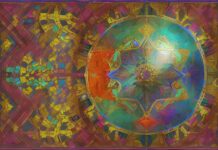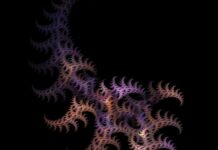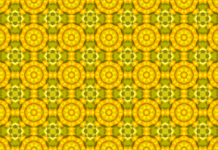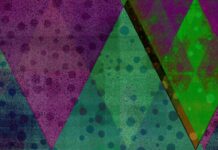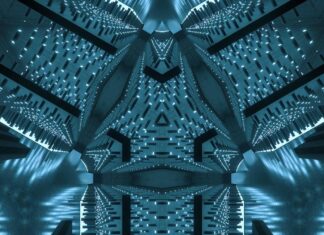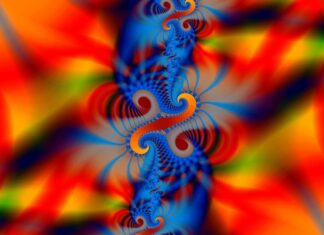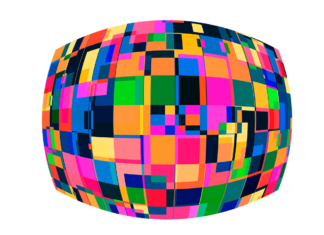Powder Bed Fusion (PBF) is an additive manufacturing (AM) technology that belongs to the broader category of 3D printing. It is a versatile and widely used technique for producing complex, high-precision parts with various materials. PBF works by selectively fusing successive layers of powdered material using a laser or electron beam to create a solid object. This process is repeated layer by layer until the desired object is fully formed. PBF has gained significant attention and adoption across industries due to its ability to manufacture parts with intricate geometries, excellent mechanical properties, and the capability to use a wide range of materials.
In the Powder Bed Fusion process, a thin layer of powdered material, such as metal alloys, ceramics, or polymers, is evenly spread across a build platform. The powdered material acts as the raw feedstock for building the object. The layer thickness typically ranges from tens to hundreds of micrometers, depending on the specific requirements of the application. Once the layer is evenly distributed, a high-energy laser or electron beam selectively melts and fuses the powdered material according to the digital design data.
The energy source used in PBF, either a laser or an electron beam, is precisely controlled by a computer system. The energy beam selectively scans the powder bed, following the contours of the digital design file, to fuse the particles together. The laser or electron beam rapidly heats the powder to a temperature just below its melting point, causing it to fuse and solidify into a solid layer. This process is known as selective laser melting (SLM) when a laser is used or electron beam melting (EBM) when an electron beam is employed.
After each layer is fused, the build platform is lowered by a fraction of the layer thickness, and a new layer of powder is uniformly spread on top of the previously fused layer. The process then repeats, with the energy source selectively melting and solidifying the newly added layer. This layer-by-layer approach enables the construction of complex geometries and intricate internal structures that would be difficult or impossible to achieve using traditional manufacturing techniques.
One of the key advantages of PBF is its ability to produce fully dense, high-quality parts with excellent mechanical properties. The localized heating and rapid solidification process result in fine microstructures and a lack of porosity, leading to superior strength and performance. Additionally, PBF offers the flexibility to use a wide range of materials, including metals like titanium, aluminum, and stainless steel, as well as ceramics and polymers. This versatility makes PBF suitable for various applications across industries such as aerospace, automotive, healthcare, and consumer goods.
In the aerospace industry, PBF is particularly valuable for manufacturing lightweight yet robust components. The ability to create complex geometries, internal channels, and optimized structures helps reduce weight while maintaining structural integrity. This leads to fuel efficiency improvements and enables the production of intricate parts like turbine blades, heat exchangers, and fuel nozzles.
Furthermore, PBF has found significant utility in the medical field. It allows for the fabrication of patient-specific implants, prosthetics, and dental devices with high accuracy and biocompatible materials. The customization potential of PBF enables tailored solutions that enhance patient comfort and improve treatment outcomes. Moreover, PBF enables the creation of complex internal structures, such as lattice structures, that promote bone ingrowth and facilitate osseointegration.
Despite its advantages, PBF does have some limitations and challenges. One of the primary limitations is the inherent anisotropy of the printed parts. Due to the layer-by-layer fabrication process, the mechanical properties can vary depending on the orientation of the printed object. This anisotropy can affect the performance and reliability of the part in certain applications, requiring careful consideration during the design phase.
Another challenge in PBF is the need for post-processing Another challenge in PBF is the need for post-processing steps to achieve the desired surface finish and dimensional accuracy. After the printing process, the parts often require support structures to prevent deformation or collapse during the build. These support structures must be carefully removed, which can be a time-consuming and labor-intensive process. Additionally, the as-printed surface of PBF parts tends to have a rough texture, which may require post-processing techniques such as machining, polishing, or sandblasting to achieve the desired surface finish.
Furthermore, the build volume in PBF machines is limited by the size of the powder bed and the available laser or electron beam power. This restricts the size of the objects that can be produced in a single build. Large-scale components may need to be divided into smaller sections and assembled afterward, introducing additional complexities and potential assembly inaccuracies.
The quality and consistency of the powder feedstock also play a crucial role in PBF. The powder particles must have a specific size distribution, flowability, and chemical composition to ensure uniform melting and solidification. Contaminations or inconsistencies in the powder can lead to defects or compromised mechanical properties in the printed parts. Therefore, strict quality control measures and powder management practices are essential to maintain the integrity of the process.
To address some of these challenges, ongoing research and development efforts are focused on improving the PBF technology. Advanced monitoring and control systems are being developed to enhance the process stability and quality assurance. Real-time monitoring of the energy source, temperature, and powder bed characteristics enable adjustments during printing, minimizing defects and optimizing the printing parameters. Additionally, innovations in powder handling and recycling systems aim to improve the powder management and reduce material waste.
Powder Bed Fusion (PBF) is a powerful additive manufacturing technology that enables the production of complex, high-precision parts with a wide range of materials. By selectively melting and solidifying successive layers of powdered material, PBF allows the creation of intricate geometries and internal structures that are difficult to achieve with traditional manufacturing methods. PBF finds applications in industries such as aerospace, healthcare, automotive, and consumer goods, offering lightweight, customizable, and high-performance components.
While PBF provides numerous advantages, challenges such as anisotropy, post-processing requirements, and limitations in build volume need to be addressed. Ongoing research and development efforts are focused on improving the process control, powder quality, and scalability of PBF. As the technology continues to advance, Powder Bed Fusion is poised to play a crucial role in revolutionizing manufacturing processes and enabling innovative designs in various industries.
Additionally, the integration of PBF with digital design and simulation tools is enhancing its capabilities and expanding its potential applications. Computer-aided design (CAD) software allows designers to create intricate and complex geometries that are optimized for additive manufacturing. Simulation software can analyze the thermal, structural, and fluid flow characteristics during the printing process, enabling the identification and mitigation of potential issues before physical production. This digital workflow improves efficiency, reduces the need for iterative prototyping, and accelerates the development cycle.
Moreover, advancements in materials for PBF are continually expanding the range of applications and performance capabilities. Metal powders with tailored compositions, improved flowability, and enhanced properties are being developed to meet the demanding requirements of specific industries. New alloys with superior strength, corrosion resistance, and thermal properties are enabling the production of components for extreme environments. Furthermore, the exploration of novel materials, such as biocompatible polymers and bioactive ceramics, is opening up opportunities in medical and biomedical fields, including tissue engineering and drug delivery systems.
In recent years, PBF has also seen progress in multi-material and multi-process capabilities. Researchers and engineers are exploring methods to incorporate different materials within a single build, enabling the production of hybrid structures with unique functionalities. This could lead to the integration of dissimilar metals or the combination of metals with polymers or ceramics, offering exciting possibilities for customized designs and enhanced performance.
As PBF technology continues to evolve, efforts are being made to increase the speed of the printing process without compromising quality. High-speed scanning systems and multi-laser configurations are being developed to reduce the build time for larger parts or increase the productivity for high-volume production. These advancements, coupled with improvements in automation and post-processing techniques, contribute to the overall efficiency and competitiveness of PBF in industrial settings.
The adoption of PBF is also being driven by the growing sustainability consciousness in manufacturing. Additive manufacturing, including PBF, has the potential to minimize material waste compared to traditional subtractive manufacturing methods. The ability to fabricate complex geometries with minimal material usage reduces material waste and energy consumption. Furthermore, the ability to manufacture on-demand and locally can reduce transportation-related emissions and inventory costs. These sustainable attributes position PBF as a key technology in the transition towards more environmentally friendly and resource-efficient manufacturing practices.
In conclusion, Powder Bed Fusion (PBF) is a transformative additive manufacturing technology that enables the production of complex, high-performance parts with various materials. By selectively fusing successive layers of powdered material using laser or electron beams, PBF offers unprecedented design freedom and manufacturing possibilities. Despite challenges such as anisotropy, post-processing requirements, and limitations in build volume, ongoing research and development efforts are continuously improving the technology. Integration with digital design tools, advancements in materials, multi-material capabilities, speed enhancements, and sustainability considerations are driving the widespread adoption of PBF across industries. As PBF continues to advance, it will undoubtedly shape the future of manufacturing, enabling innovative designs, sustainable production practices, and unlocking new possibilities in numerous sectors.





